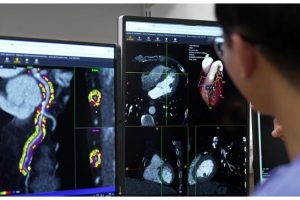Office of Inspector General arms organizations with SAS code to analyze prescription data
To combat the ongoing opioid epidemic, the US Department of Health and Human Services (DHHS) has published a toolkit for using prescription drug claims data to analyze patients’ opioid levels and identify those at risk of opioid misuse or overdose. The methodologies in the toolkit have been used to identify over-prescribers when applied to Medicare Part D data and include the actual SAS® software code used by the DHHS Office of the Inspector General (OIG) in its extensive work on opioids
Using the SAS code featured in the toolkit, OIG found almost 71,000 Medicare beneficiaries at serious risk of opioid misuse or overdose. According to the OIG report, almost 58,000 people received opioid amounts “more than two and a half times the dose that CDC recommends avoiding.” The analysis also uncovered approximately 15,000 beneficiaries who “appeared to be doctor shopping – i.e., they received high amounts of opioids from multiple prescribers and pharmacies.”
For example, the analysis revealed a Louisiana beneficiary who received 52 opioid prescriptions from 23 pharmacies in four states. In Florida, a physician ordered 33 prescriptions for one individual, including 11 months of fentanyl and oxycodone. These abnormal activities can be found amid large amounts of data using the OIG toolkit.
Download the full toolkit and check out the OIG’s announcement for easy access to the SAS code.
In many places, documenting and analyzing prescription Medicare, Medicaid and other health data is still performed manually or may be limited by available analysis skills and tools. The methodology and software code developed by the DHHS OIG provide a critical foundation on which states, attorneys general as well as other public and private partners can begin to curb the opioid crisis.
“We can’t effectively fight the opioid problem if we don’t understand it. Data and analytics are critical to getting citizens the help they need, and thwarting the illegal trafficking of these drugs,” said Dr. R. Kirk Jonas, Director of the National Governors Association Center for Best Practices.
Medicare Part D plan sponsors, private health plans, state Medicaid Fraud Control Units and state prescription drug monitoring programs routinely analyze prescription drug claims data. The toolkit walks users through how to merge the data and calculate daily morphine equivalent dose (MED) – also called the morphine milligram equivalent. The MED calculation produces a standard value for measuring opioids amounts and strengths.
The toolkit also provides guidance on conducting data quality control checks, investigating patients with specific conditions and pinpointing at-risk patients. The code may be modified to fit the needs of different users and applied to state Medicaid data or a variety of other sources (commercial, Medicaid, EMS, law enforcement, etc.).
“We are proud to be part of DHHS efforts to rally their partners to combat this epidemic. The SAS code in the toolkit is a solid base for a comprehensive analytical approach to fighting opioid use disorder,” said SAS CEO Jim Goodnight.
Learn more about how analytics can help prevent substance use disorder and overprescribing.
Going beyond the toolkit
A multifaceted approach to combating the opioid crisis includes aggregating and analyzing opioid-related data scattered across numerous government agencies. States capture opioid prescription data in prescription drug monitoring programs, but those alone will not paint the full picture and are underutilized by prescribers. States need the ability to continuously monitor behavior to more quickly intervene and proactively investigate potential misuse by prescribers, beneficiaries, manufacturers and distributors. Pattern recognition, machine learning, anomaly detection, and artificial intelligence can help analysts working in a range of disciplines to:
- Uncover early signs of addiction by identifying patients with inappropriate amounts or combinations of opioid prescriptions.
- Deter drug trafficking by accelerating the identification of suspicious prescribing and dispensing patterns.
- Coordinate treatment by providing patient and drug insights directly to physicians and prescribers so they can make well-informed decisions about whether to prescribe an opioid.
SAS is the leader in analytics. Through innovative software and services, SAS empowers and inspires customers around the world to transform data into intelligence. SAS gives you THE POWER TO KNOW®.
SAS and all other SAS Institute Inc. product or service names are registered trademarks or trademarks of SAS Institute Inc. in the USA and other countries. ® indicates USA registration. Other brand and product names are trademarks of their respective companies. Copyright © 2018 SAS Institute Inc. All rights reserved.
SOURCE SAS
































